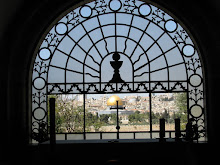Farewell to Assa organized by Gideon opened me a way to visit the ancient Nabatean city of Shivta and the settlement Kadesh Barnea, near Egypt-Israel border. We had the privilege to have Yigal an expertee on Nabatean civilization as a guide. The other location, Kadesh Barnea is a typical Israeli agricultural settlement where we visited a tomato farm and a commercial honey production unit. Fortunately, Yuval has his home in Kadesh Barnea and that brings us to have great time and a warm get together with a heavy lunch at his place. The Egypt-Israel border was so close to this settlement and I was just wondering what sort of an easy life they were leading here. I was told that as per the peace treaty only Egyptian police and not their army are allowed to access this part of border called Sinai. Most household own a gun for their security! Located at the Egypt-Israel border, Kadesh Barnea is also known as Nizzana-Sinai in Israel. However, the Biblical Kadesh Barnea is believed to be the place called Ain el Qudeirat today; located in the Sinai Peninsula of Egypt, a few kilometres south of the Israeli Kadesh Barnea. In Hebrew the word Kadesh means "holy" and Barnea refers to "desert of wandering".
Ancient Kadesh Barnea is one of the stations on the Israelites' journey during the Exodus from Egypt and has strong Biblical significance. Also known as Kadesh, this place is mentioned 10 times in Bible. Hagar, the maid of Sarah fled to Kadesh Barnea and the Angel of Yahweh appeared to her (Gen 14:7; 16:14; 20:1). It was here the Israelites spent 38 years of their 40 year sojourn in desert (Deut 1:2; 2:14). From here, the twelve spies were sent by Moses to explore the Promised Land for 40 days (Numb 12:16-14:9). Here the Israelites rebelled for water and Moses brought water from the rock, but for his self pride Moses was punished by God not to enter the Promised Land (Numb 20:2). Miriam, the sister of Moses died and was buried in Kadesh Barnea (Numb 20:1). And around Kadesh-barnea, Korah, Dathan, and Abiram rebelled against Moses’ leadership and as a result, these men and their families were swallowed up in the earth (Numb 16).
Ancient Kadesh Barnea is one of the stations on the Israelites' journey during the Exodus from Egypt and has strong Biblical significance. Also known as Kadesh, this place is mentioned 10 times in Bible. Hagar, the maid of Sarah fled to Kadesh Barnea and the Angel of Yahweh appeared to her (Gen 14:7; 16:14; 20:1). It was here the Israelites spent 38 years of their 40 year sojourn in desert (Deut 1:2; 2:14). From here, the twelve spies were sent by Moses to explore the Promised Land for 40 days (Numb 12:16-14:9). Here the Israelites rebelled for water and Moses brought water from the rock, but for his self pride Moses was punished by God not to enter the Promised Land (Numb 20:2). Miriam, the sister of Moses died and was buried in Kadesh Barnea (Numb 20:1). And around Kadesh-barnea, Korah, Dathan, and Abiram rebelled against Moses’ leadership and as a result, these men and their families were swallowed up in the earth (Numb 16).










































